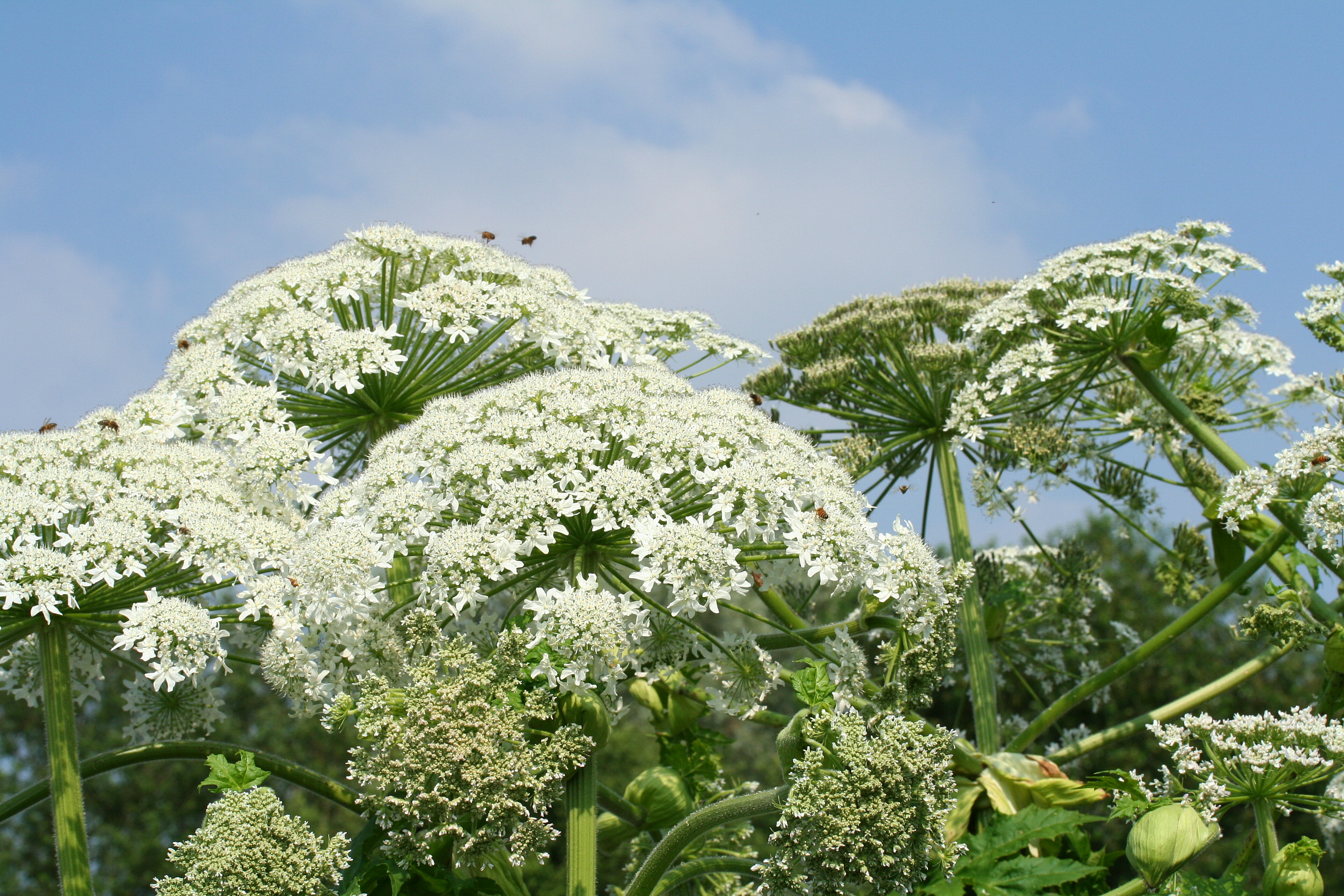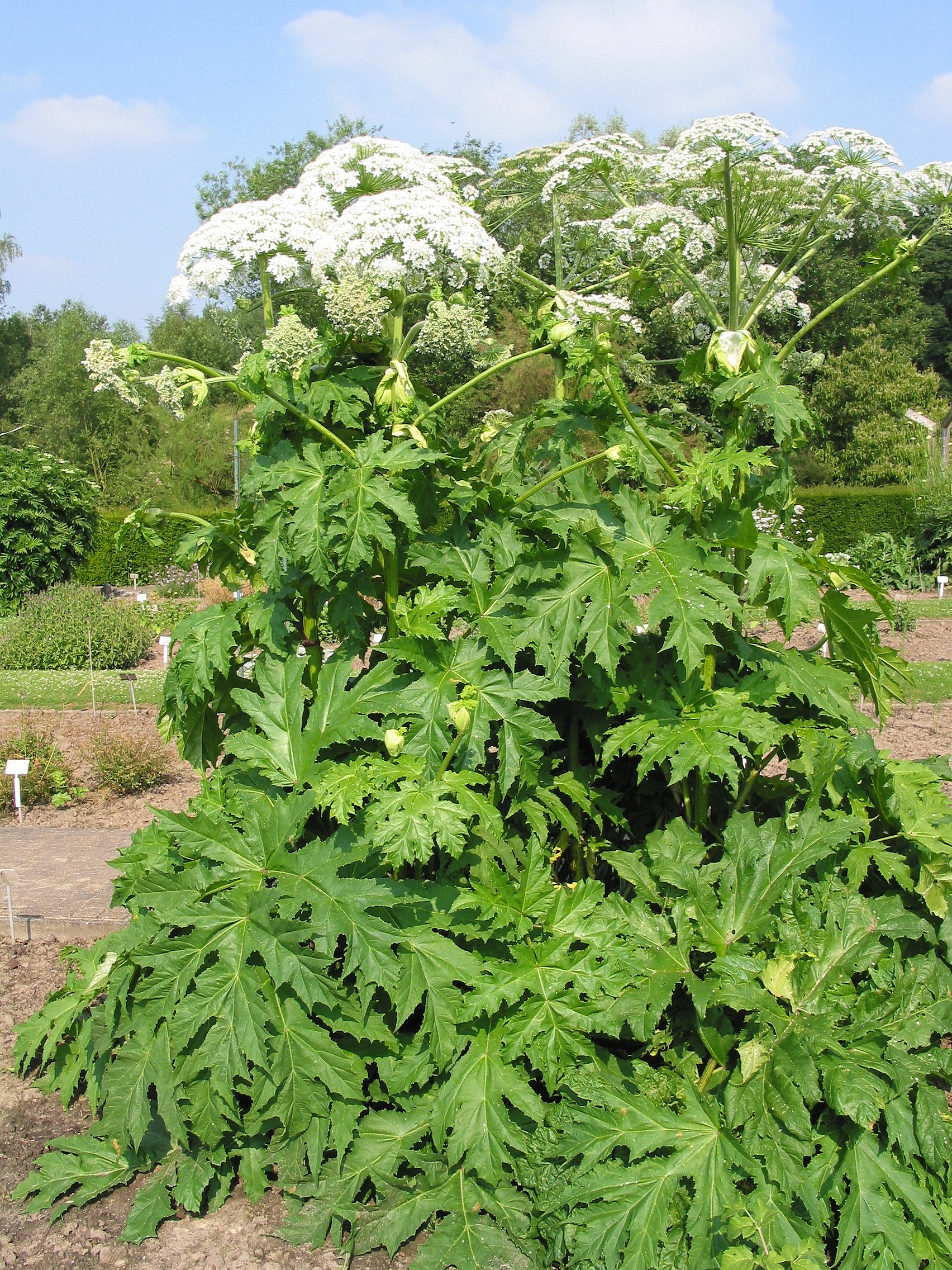Photo by Jean-Pol GRANDMONT licensed under CC BY 3.0
Everybody run, giant hogweed is coming! I am sure by now, many of you reading this will have picked up a story or two about a nasty invasive plant that will render you blind and nursing third degree burns. Indeed, giant hogweed (Heracleum mantegazzianum) is a plant worth learning how to identify. However, the tone of these articles is often one of hysterics, leaving the reader feeling like this plant is more like a Triffid, actively uprooting itself to hunt down unwary humans. Is giant hogweed worth all of this anxiety?
Let's start with the plant itself. Giant hogweed is a member of the carrot family (Apiaceae). Its native range encompasses much of the Caucasus region and into parts of central Asia. It was (and probably still is in some areas) considered a wonderfully large and unique addition to a temperate garden. And large it is. Individual plants regularly reach heights of 6 feet (2 m) or more and some records indicate that individuals over 10 feet (3 m) in height are not unheard of.
Photo by Jean-Pol GRANDMONT licensed under CC BY 3.0
Because it was once a popular garden plant, this species has been introduced far outside of its native range. For many decades, giant hogweed probably lurked in the background unnoticed, its seeds finding favorable spots for germination among other weedy plants along roadsides, fallow fields, and abandoned lots. In the last few years it has grown harder to ignore. More and more plants are showing up where they shouldn't. Indeed, it seems that giant hogweed is yet another invasive species we need to get on top of. But what about all of that panic? Certainly its invasive status alone isn't what all the hype is about.
Well, like all members of the carrot family, giant hogweed produces an impressive array of chemical compounds. Many of these compounds serve to protect the plants from hungry herbivores and a plethora of microbial infections. Some of the compounds in the giant hogweed arsenal are a group known as the furocoumarins. These compounds defend the plant in a rather alarming way. These furocoumarins are phototoxic, which means when the sap gets on the body of an animal and is exposed to sunlight, they cause severe chemical burns.
Stories of people being hospitalized due to an unfortunate run in with this plant make headlines wherever it pops up. That being said, simply touching the plant isn't going to hurt you. The chemicals are sloshing around in the sap of giant hogweed and the plant needs to be injured in some way before they will leak out onto whatever is hurting it. For humans, this usually occurs while mowing or weed whacking, or if a child mistakenly uses the hollow stem as a pea shooter.
With stories like this floating around, it is no wonder then why people get so upset when this plant shows up. However, I can't help but feel that this is being fed on a bit by media fear-mongering. It is worth putting giant hogweed into some practical context. It may actually alarm you to know just how many plants on the landscape have the ability to cause you harm if handled the wrong way.
Wild parsnip (Pastinaca sativa). Photo by USFWS Midwest Region
Even hogweeds less robust relatives are capable of causing phototoxic reactions. I once weed whacked a large patch of Queen Anne's lace (Daucus carota) and wild parsnip (Pastinaca sativa) and ended up covered in nasty blisters the next day. I recovered but I sure did learn to give those two species more respect whenever I encountered them. Plants like poison ivy, oak, and sumac certainly cause their fair share of misery but even these do not get the sort of media attention that giant hogweed does.
Even more interesting are some of the species we actively plant in our gardens. For instance, castor bean (Ricinus communis) is quite popular among gardeners and it is responsible for producing ricin, a protein with enough killing power to bring down an adult human many times over. Take a bite out of the castor bean in your garden and it will be the last thing you ever eat. Even more potent than ricin is aconitine, an alkaloid produced by beloved garden plants like the monkshoods (Aconitum spp.) and the larkspurs (Delphinium spp.). This powerful alkaloid causes your nervous system to endlessly fire, leading to convulsions and death.
Castor bean (Ricinus communis). Photo by Jason Hollinger licensed under CC BY 2.0
Similarly, a few different species of Datura are commonly grown around the world. Datura posioning is nothing to mess with and symptoms include "a complete inability to differentiate reality from fantasy; hyperthermia; tachycardia; bizarre, and possibly violent behavior; and severe mydriasis (dilated pupils) with resultant painful photophobia that can last several days." Even plants we grow for food can hurt us in bad ways. Most members of the tomato family produce a multitude of toxic alkaloids like solanine. That is why only ripe tomatoes and eggplants should ever be consumed.
Jimsonweed (Datura stramonium). Photo by Al_HikesAZ licensed under CC BY-NC 2.0
In reality, I could devote an entire blog and podcast series to the chemical warfare plants have taken up during their long and complicated evolutionary history. Long story short, plants are sessile organisms that must defend themselves in order to survive and toxic chemicals are really great means to do just that. The reality is that we welcome many toxic and potentially harmful plants (both knowingly and unknowingly) into our lives and it seems slightly odd that species like giant hogweed warrant such fervor from media outlets. That being said, it is important to treat these plants with the respect they deserve. Don't bother them and they won't bother you.
So, is giant hogweed coming to attack you and your family? No. Is giant hogweed a plant worth learning to identify? Yes. Is giant hogweed dangerous to humans? Yes, but only under certain conditions.
Plants like giant hogweed are the perfect reminder as to why we must give plants more respect in our society. Teaching friends and family which plants can feed them and which plants can hurt them is something everyone should invest some time in doing. If you find giant hogweed in your area and you do not live in the Caucasus or central Asia, don't be a hero. Call a professional to come and deal with it. Otherwise, stay calm and keep on botanizing. Giant hogweed is not out to get you.





